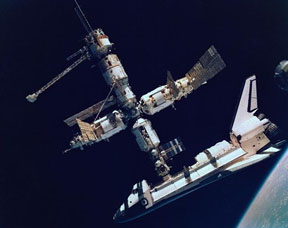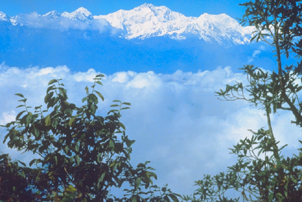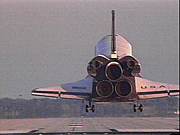Click on image for full size
Courtesy of NASA
Related links:
U.S. is Fed Up with Russia
News story originally written on February 4, 2000
Will Russia ever put the service module for the International Space Station in space? NASA officials are demanding an answer from the Russian government. The necessary service module is currently waiting to be launched into space. It took the Russian Space Agency an extra 2 years to complete the module.
NASA thought all was well and the module would be launched in the upcoming weeks. But a surprise investor has supplied funds to keep the ancient Mir Space Station in orbit. Russia decided to send equipment that was for the ISS, to the Mir instead. Now they say the module will be launched in August, but the United States isn't buying it.
''The Russians have got to decide if they want to work peacefully with other countries or do they have issues so important to their national interests they want to break their commitments,'' NASA Administrator Daniel Goldin said. 'It is up to the Russians to demonstrate to America and the international partners that they are committed.''
The U.S. is not taking any more chances. NASA officials say they are close to completing their own service module. If Russia does not put their module in orbit in August, the U.S. will send up their own. Unfortunately, the U.S. module will not be able to support life like its Russian counterpart. However, it will provide propulsion and therefore keep the station in orbit.
"I think that it is high time that NASA finally woke up and decided that the Russians were not going to come through on the service module for the International Space Station. This decision to go on is certainly a step in the right direction," Rep. Dave Weldon, R-Fla., said.














